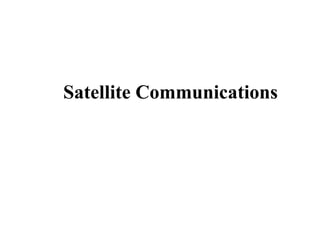This document discusses satellite communications and related concepts. It covers satellite-related terms like earth stations, uplinks, and downlinks. It describes ways to categorize communications satellites based on coverage area, service type, and usage. It also covers satellite orbits, geometry terms, frequency bands used, and factors affecting satellite link performance. Finally, it discusses satellite network configurations and capacity allocation strategies like FDMA, TDMA, and CDMA.























